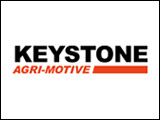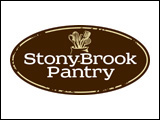Canadian pulse growers should consider international market regulations before using a desiccant, or harvest management product, says the organizations that represent pulse producers across the Prairie provinces.
Alberta Pulse Growers, Saskatchewan Pulse Growers, and Manitoba Pulse Growers are urging growers to review the international maximum residue limits (MRLs) set by regulatory agencies for the harvest management products they are using. With over 90 per cent of Canadian pulses being exported across the world, ensuring international acceptance of pulse crops is essential to a grower’s bottom line, according to Leanne Fischbuch, Executive Director for the Alberta Pulse Growers.
“Producers who don’t take MRLs into account when they desiccate their crops run the risk of reducing their marketing options later,” said Fischbuch. “As a grower, arming yourself with a basic understanding of international requirements will help keep those markets open to you and your crop.”
Carl Potts, Executive Director of the Saskatchewan Pulse Growers, believes that some simple but important steps can increase the likelihood that a crop will have international market acceptability. “Following the product label recommendations for rates and timing and consulting with your exporter or processor about which desiccants are acceptable or unacceptable in international markets are two of the easiest ways growers can mitigate risk.”
The three grower groups have also prepared a chart that shows the market considerations when using common desiccants and harvest management tools on pulse crops for the 2012 season. While growers should still consult with their processors, this chart provides a basis for choosing the right desiccant or harvest management tool for acceptance into Canada’s main export markets.
Desiccants, or harvest management tools, are applied late in the crop year to dry the crop and create uniformity of plant material at harvest. Because of the late-season application of these products, some residue may remain on the crop, and as a result, most countries or markets have in place maximum acceptable levels of residue. In some markets, the MRLs are very low, but the provincial grower groups, alongside Pulse Canada and other industry partners, are working on harmonizing these limits internationally in an effort to ensure Canadian growers remain competitive in the global marketplace.
“We continue to work on developing clear and reasonable MRLs for international markets that currently have no, or very low, MRLs,” said Michael Reimer, Manitoba Pulse Growers’ Executive Director. “The Canadian pulse industry will keep pushing for greater acceptance and use of Canadian pulses both in domestic and international markets to ensure profitability for our growers.”



